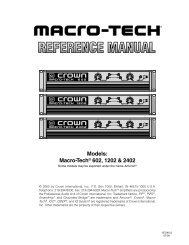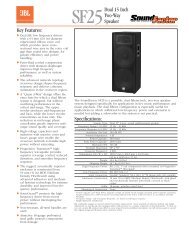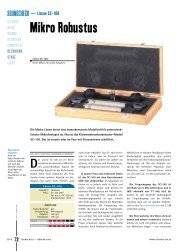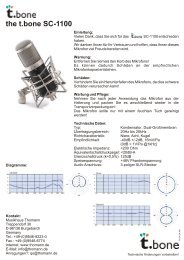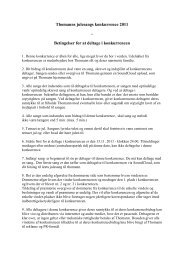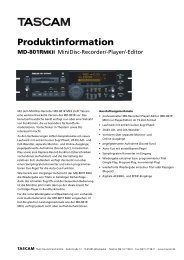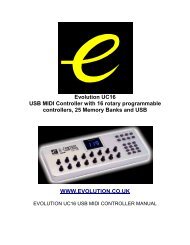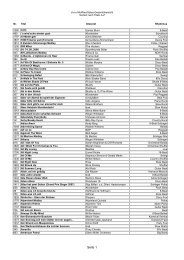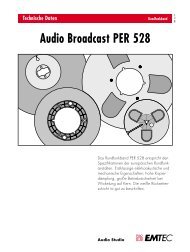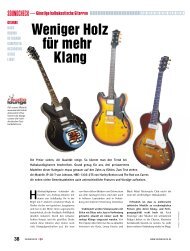You also want an ePaper? Increase the reach of your titles
YUMPU automatically turns print PDFs into web optimized ePapers that Google loves.
Different ways of playing Grooves…<br />
You may remember that when we first introduced the Groove Librarian above, we<br />
made the playing Groove repeat by clicking the Auto Groove Repeat A button. This<br />
button is just one of a number of options which let you change different aspects<br />
of the Groove Librarian’s behaviour. On the right of the BFD interface, there are<br />
two columns of three buttons. Each column relates to one of the Groove Librarian’s<br />
Banks. As well as the Auto Groove Repeat button already discussed above, there<br />
are another two buttons in each column: Auto Bundle Shuffle and Auto Fill. When<br />
Auto Groove Repeat is enabled for any of the two Banks, turning on Auto Bundle Shuffle<br />
randomly shuffles between Grooves in the Bank instead of repeating the same<br />
Groove, while Auto Fill inserts a random Fill from the Fill Bank at an interval specified<br />
by the Auto Fill Period option in the Play Options panel. In this way it is possible<br />
to create convincing, varied drum-accompaniment with minimum effort.<br />
The Play Options panel contains several other options which control how<br />
BFD’s Grooves behave. Click the play options button in order to bring up<br />
the panel. Perhaps the most important parameters to understand here are the<br />
Sync modes and Transition Mode options.<br />
Sync to Song<br />
This function makes Grooves play in phase with the song clock. You will have<br />
noticed that, so far, when you initiate any loaded Grooves, they start playing<br />
immediately, and are not synchronized with the song. With the Sync to Song option<br />
on, start the sequencer playing, and trigger one of BFD’s Grooves via MIDI. You<br />
will notice that, depending on when you hit the note within a bar, the Groove<br />
starts playing from that point within it. For example, if you trigger the Groove on<br />
the 2nd beat of a bar, it will play from the 2nd beat - so that if there is a kick on the<br />
1st beat, and a snare on the 2nd, it will start playing with the snare.<br />
Sync Groove Phase<br />
This method of synchronization makes subsequent Grooves play in phase with<br />
the first Groove played. Press play on your sequencer, and trigger a Groove<br />
via MIDI on, say, the 4th beat. Now, when you trigger another Groove, it will<br />
synchronize to the original Groove you played.<br />
25



